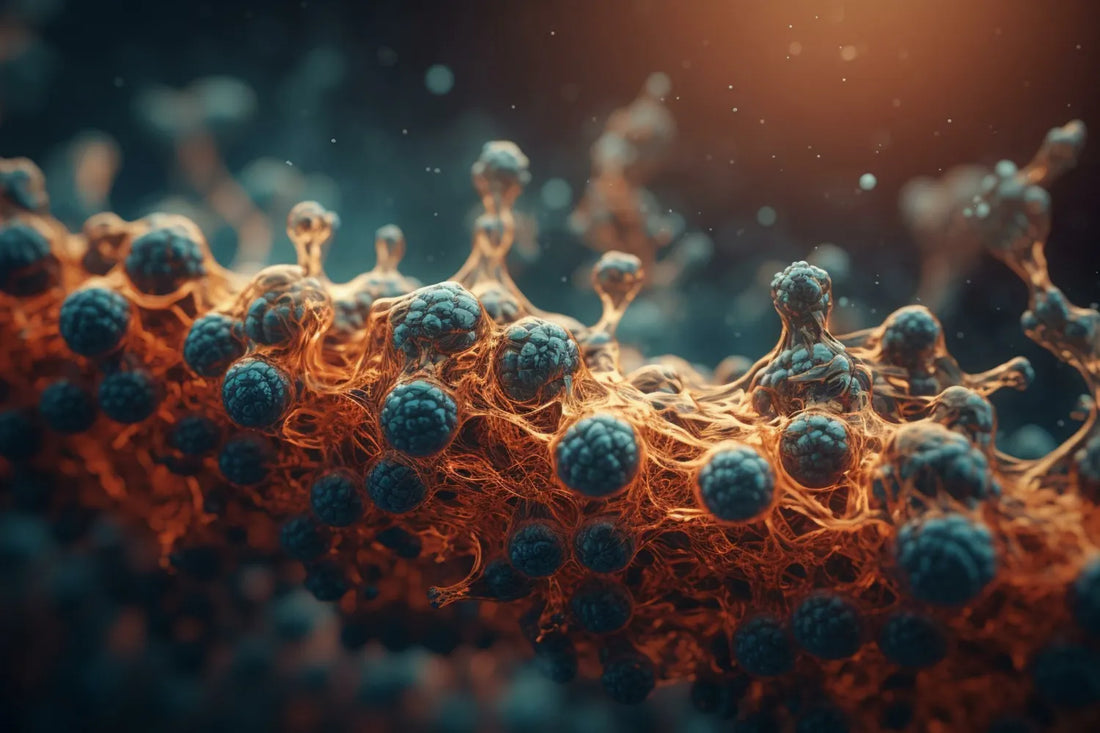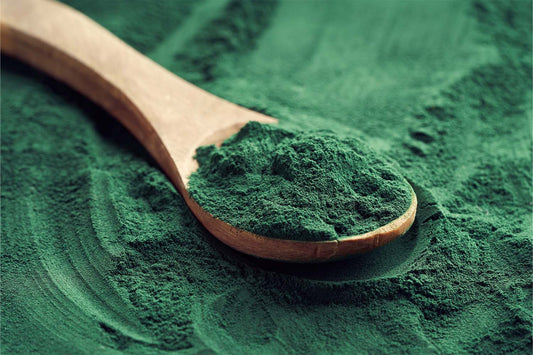Lipids, an often overlooked bedrock of your body's cellular structure, are organic compounds that are vital for a range of functions, from energy storage to maintaining cell integrity. While often stigmatized as “fats,” they are so much more than that.
Among the diverse lipid family, polar lipids, which contain phospholipids and triglycerides, are the undeniable stars of the show. Knowing the difference between these two can guide you toward better nutritional choices and overall wellness.
What Are Phospholipids?
When we talk about polar lipids, we're referring to complex lipids that act as the building blocks of our cell membranes.
Picture them like tiny cellular guards with a glycerol backbone that holds two fatty acid tails and a phosphate group in place. The fatty acid tails don't like water (hydrophobic), while the phosphate group is a water enthusiast (hydrophilic).
The duality makes phospholipids perfect candidates for forming the bi-layer of cell membranes. This bi-layer ensures that cells keep their shape while controlling the passage of substances like nutrients and ions.
Phospholipids are also the go-to messengers inside your cells — they're essential for intracellular signaling pathways that allow cells to communicate and respond to external stimuli.
When you consider that they also serve as precursors for a slew of important molecules like prostaglandins, you begin to see why they're so crucial.
Why Are Phospholipids Essential for Overall Wellness?
Phospholipids are like the multi-talented artists of the lipid world. Not only do they play a crucial role in building and sustaining the very structure of your cells, but they also contribute significantly to brain health and emotional well-being.
Brain Health
Phospholipids are the primary constituents of brain cell membranes, with types like phosphatidylserine and phosphatidylcholine being especially abundant. These variations are key when it comes to memory retention, cognitive function, and even emotional stability.
Think of them as the oil that keeps the cogs of your brain running smoothly — sub-optimal levels of these phospholipids have been associated with certain cognitive conditions.
Maintaining healthy phospholipid levels isn't just good for your cells — it's essential for your mind, too.
Cell Membrane Function
Your cell membranes are like the security systems of your cellular homes, and phospholipids are the security personnel. These lipids arrange themselves into the aforementioned bi-layer structure, creating a selective barrier around your cells.
By doing so, they're exceptionally good at regulating the passage of molecules. They keep out unwanted or harmful substances while rolling out the welcome mat for essential nutrients and ions.
When you realize that every function of your body is predicated on the smooth functioning of these cells, you'll start appreciating phospholipids in a whole new light.
What Are Triglycerides?
Triglycerides are often mentioned in the same breath as cholesterol, usually in discussions about heart health or a recent visit to the doctor. But what exactly are they? For starters, triglycerides are the most prevalent type of fat in both your body and the food you consume.
Much like phospholipids, they have a glycerol backbone. However, unlike phospholipids, which have two fatty acid tails and a phosphate group, triglycerides have three fatty acid tails. Imagine them as a three-legged stool, solid and primarily built for storage.
Triglycerides don't moonlight as cellular guards or messengers like phospholipids. Instead, their purpose is to function more like the energy vaults of your body. If your body has more calories than it can immediately use, it converts those excess calories into triglycerides. These are then stored in specialized cells known as adipocytes or fat cells.
Why Are Triglycerides Important for Energy?
Have you ever wondered how marathon runners keep going or how you can accidentally skip a meal and still function? You can thank triglycerides for that. These molecules act as your body's energy reserves, ensuring you have a steady supply of fuel even when you're not eating.
Energy Storage
Triglycerides are the body's go-to for storing any extra calories you consume but don't immediately use. They're your energy safes, keeping those calories stored until you need them.
During times when you're not eating — like when you're asleep, exercising, or fasting — your body taps into these triglyceride stores, converting them back into energy.
By doing so, your body can maintain a consistent energy supply to support essential functions like brain activity, muscle movement, and core body temperature.
Metabolic Health
While triglycerides serve as a helpful energy reserve, it's crucial to manage their levels wisely.
High triglyceride levels are often a red flag for other health concerns, such as insulin resistance. Elevated triglycerides are also associated with an increased risk of cardiovascular diseases like heart attack and stroke. Because of this, it's important to keep these levels in check for optimal metabolic health.
How Do Phospholipids Differ From Triglycerides?
Think of phospholipids and triglycerides as two siblings with different personalities and roles in the polar lipid family. Although they share some similarities — like having a glycerol backbone — they each serve unique functions in your body due to their different molecular structures.
To fully appreciate these two types of polar lipids, it's important to dive into the distinctions that make them individually valuable and collectively essential for overall health and wellness.
Molecular Structure
The glycerol backbone is the shared ancestry of both phospholipids and triglycerides. But while they start from the same point, their paths diverge fairly quickly.
Phospholipids sport two fatty acid tails and one phosphate group. This gives them their "amphiphilic" nature — meaning one part of the molecule likes water (the phosphate group) while the other part (the fatty acids) avoids it.
Triglycerides, on the other hand, commit fully to their hydrophobic nature by having three fatty acid tails attached to the glycerol backbone. There's no phosphate group playing mediator here; triglycerides are all in on their water-repelling properties.
This significant structural difference is a defining factor in the distinct roles they play within the body.
Role in the Body
Phospholipids are the jack-of-all-trades in the cellular world. They're essential for forming and maintaining the structure of cell membranes. This enables them to control what enters and exits a cell, keeping harmful substances out and letting essential nutrients in.
In addition, phospholipids are vital in intracellular signaling and as precursors for other essential molecules, making them active, dynamic players in various biological processes.
Triglycerides are less dynamic, but no less important. They're primarily the body's energy custodians, storing excess calories for future use. Unlike phospholipids, they don't have a role in cellular messaging or membrane structure.
Instead, they wait in reserve until the body needs an energy boost, making them more static but equally crucial for bodily functions.
How Can You Achieve Healthy Levels of Phospholipids and Triglycerides?
Now that you're armed with the knowledge of what phospholipids and triglycerides are, you might be wondering, "How can I make sure I have enough of these crucial lipids?"
Fortunately, dietary choices can play a significant role in maintaining these lipid levels and, thus, your overall health. Let's delve into some dietary strategies, including the potential benefits of algae and plant-based diets.
Sources in Diet
When it comes to diet, understanding where to find both phospholipids and triglycerides can help you make better nutritional choices.
Phospholipids are abundant in nutrient-rich foods like eggs, soybeans, and fatty fish such as salmon, which also provide proteins and omega-3s. Triglycerides are found in fats and oils like olive oil and in meats and dairy. While these foods offer other nutrients like protein and calcium, moderation is crucial to avoid high triglyceride levels.
A balanced diet that includes a mix of these foods can help maintain optimal levels of both phospholipids and triglycerides, contributing to a well-rounded approach to your overall health and wellness.
Algae as a Source
For those following a plant-based or eco-conscious lifestyle, there's good news! When certain strains of algae are grown in the sun, they can provide both types of these essential lipids. Nannochloropsis algae is the primary algae crop grown in the sun. You might not think of algae as a nutritional powerhouse, but these tiny aquatic organisms have big benefits.
Here at iwi life, we specifically focus on this type of algae to produce our variety of omega-3 supplements. Not only is it beneficial for humans, but it’s beneficial for the environment, too. Our algae farms use salt water from underground aquifers and provide a sustainable source of essential nutrients.
The Bottom Line
Understanding the nuances between phospholipids and triglycerides is not just important for academics; it has real-world implications for your dietary choices and overall health.
In short, phospholipids are the main defenders of cell membrane integrity and brain health, while triglycerides serve as your body's energy reservoir. Both are essential but perform distinct roles that complement each other.
A balanced diet, rich in diverse nutrients, can naturally support healthy levels of these essential lipids. Algae-derived omega-3s, such as those available here at iwi life, can further provide an effective, sustainable, and plant-based way to supplement your polar lipid, specifically your phospholipid, intake.
You have options that offer you the flexibility to create a holistic wellness plan that aligns with your health goals and lifestyle. So why wait? Take a step toward balanced wellness today!
Sources:
What Are Lipids? | Cleveland Clinic
The Crucial Roles of Phospholipids in Aging and Lifespan Regulation | Frontiers
The Lipid Bilayer - Molecular Biology of the Cell | NCBI Bookshelf
Phosphatidylserine in the Brain: Metabolism and Function | PMC
Triglycerides: Why Do They Matter? | Mayo Clinic
High Blood Triglycerides | NIH
Biochemistry, Lipids | NCBI Bookshelf
















